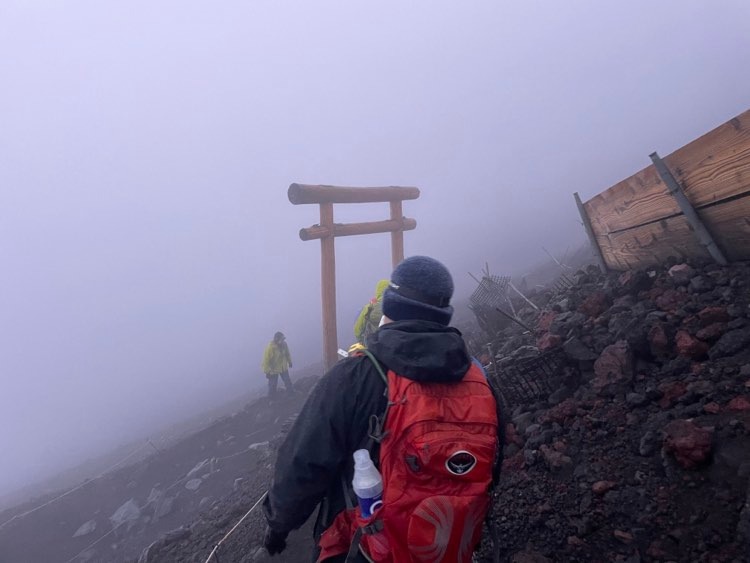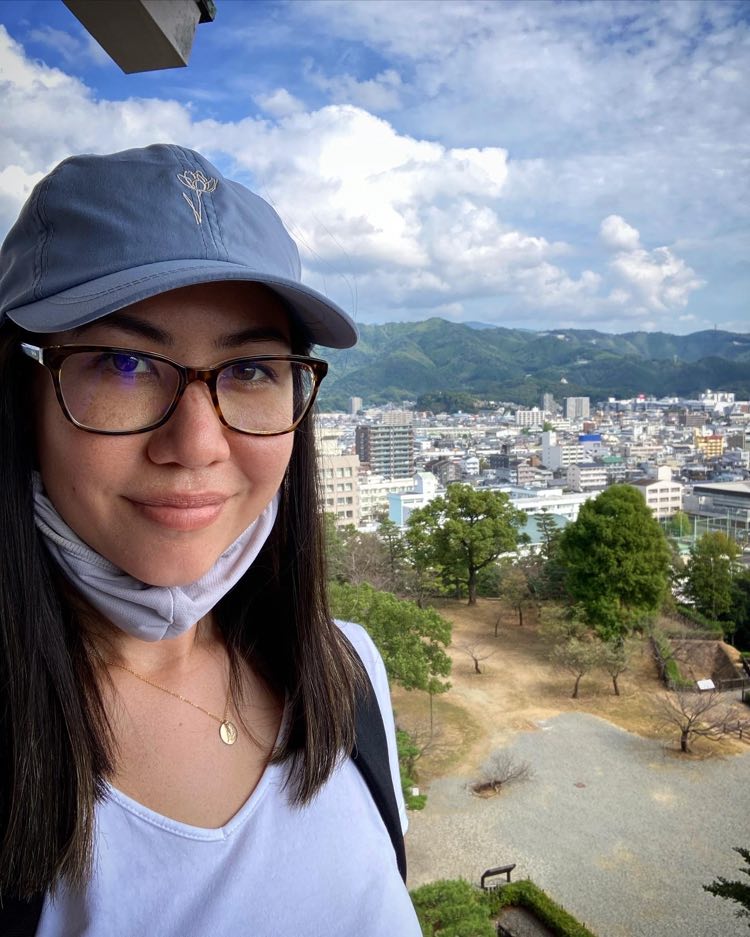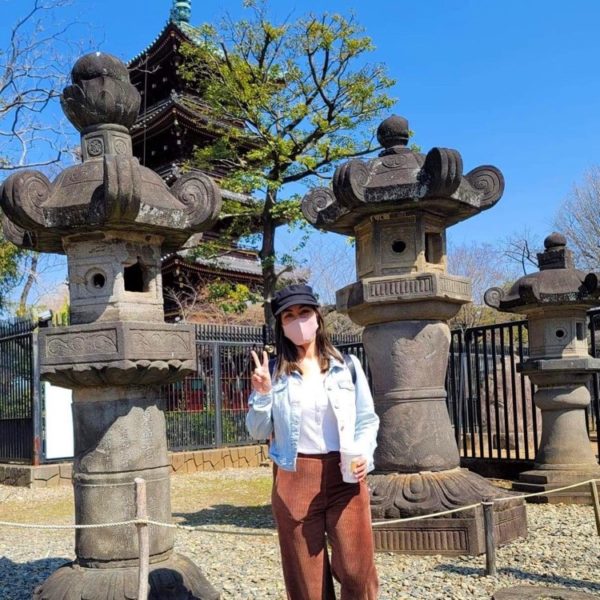
For over a year now, I’ve been fortunate to call Japan my home. My husband and I moved here from Honolulu, Hawaii, USA. I had lived on the small island of Oahu since high school and was ready for a fresh start abroad. So far, my life in Japan has been a fun and unique experience.
I’ll admit moving to a foreign country during the COVID-19 pandemic was stressful, but I’m still so grateful for the opportunity.
Living in this country is a whole new adventure than merely visiting it.

Part of the fun of living abroad is experiencing the differences in daily life and culture shock. There are many unique things about life in Japan I’ve gotten to observe from living in a Japanese neighborhood.
Read on for 9 Unique Things about Life in Japan. I hope this is travel inspiration for you to plan your own trip to Japan (once tourism officially reopens) to appreciate the country’s distinctive culture and loveable quirkiness for yourself.
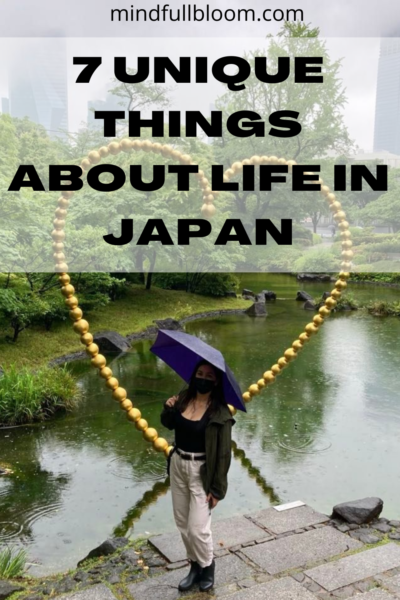
1. Silence is Golden
If you find it irritating when people talk loudly in public areas – you’re not alone. The Japanese appreciate silence as way to show humbleness and courtesy to others.
There are signs throughout public areas asking to refrain from loud conversations and to not speak on the phone. You’ll find them in restaurants, elevators, and on the train. You can even find them in the gondola cars during ski season. And at campsites and parks it’s not permitted to play loud music.
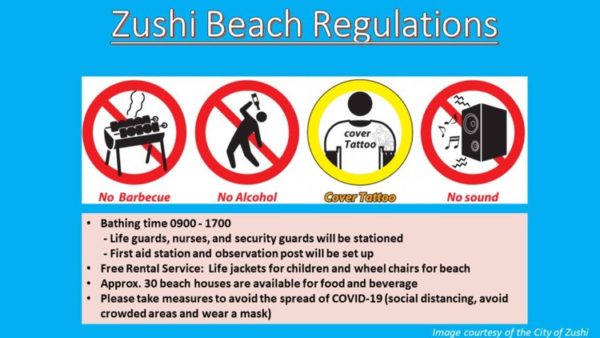
I’ll admit it’s nice to go to the beach or camping, and not have to hear your neighbor blasting their stereo. In Japan, it can be considered rude to be loud and to draw attention to yourself.
Japan’s reverence for silence can be traced back to its heavy influences of Shinto and Buddhist philosophies. Silence is seen as a positive thing – that allows for clarity, truth, and simplicity. It also coincides with their high cultural value of being courteous towards one another.
Read Related: How I Survived Moving Abroad with an Anxiety Disorder
2. Neighborhood Chimes
Another unusual thing about life in Japan is their neighborhood chimes. Much like a clock tower, these musical chimes are played 1-2 times from loud speaker systems throughout each neighborhood.
My neighborhood plays an upbeat chime that goes off at 11am and 5 pm. Each area differs in times and songs played.
These chimes are played daily to test the broadcast systems. The public broadcast speakers can be found all throughout Japan. They’re used to alert the public on dangerous weather conditions such as tsunami threats. It’s also used to remind children that it will be dark soon so they should return home.
I found it strange when I first heard these sounds. I often can’t tell where exactly they’re coming from. But now I’ve grown accustomed to them and I usually don’t even notice them anymore.
I’ve noticed other adorable songs and chimes throughout daily life here. In our home, our bathtub will chime a short melody to tell you it’s done re-heating. At the supermarket, many food brands have their own upbeat theme song playing to capture your attention. And train stations play an upbeat melody to alert you when a train is coming.
Even garbage trucks play a chime to alert cars they’re stopping. I’ll admit sometimes it can be a little irritating, but for the most part it creates a fun, playful environment.
3. Keep Your Trash to Yourself
If you’ve traveled to Japan before, then you’ve already noticed their lack of public trash cans. Although the cities are sparkling clean, public trash cans are hard to come by.
Due to a domestic terrorist attack in Tokyo’s subways in 1995, the country removed most of its public receptacles as a safety precaution.
However, public trash cans still do exist, they’re just not that many. You’ll find them in convenience stores or public bathrooms. The common thing to do is carry a plastic bag with you and take your trash home. Every time I venture out, I always carry a couple extra bags in my backpack for this.

Cafes and eateries are willing to take your trash if you’re a purchasing customer. So it’s only a problem when you’re taking food and drinks on the go.
Safety First
In 1995, a cult group, Aum Shinrikyo, used a deadly gas to poison thousands of people on the subways. The sarin gas was stored in plastic bags that the terrorists punctured on the trains. This led to 12 dead and over 6,000 people injured. Trash cans pose a hazard because terrorists could leave chemical weapons or bombs in them.
Organize Your Trash
Another difference between life in American and life in Japan, is that trash is separated when disposed of. They separate burnable items (paper, food, wood chopsticks, small plastics) from non-burnable items (plastics, large containers, etc.). Bottles and cans are also disposed of in a different container to be recycled.
It’s required to put your trash in a clear or white bag so workers can easily what’s inside. If you didn’t follow the guidelines, garbage collectors will leave it behind for you to fix and try again the next collection day.
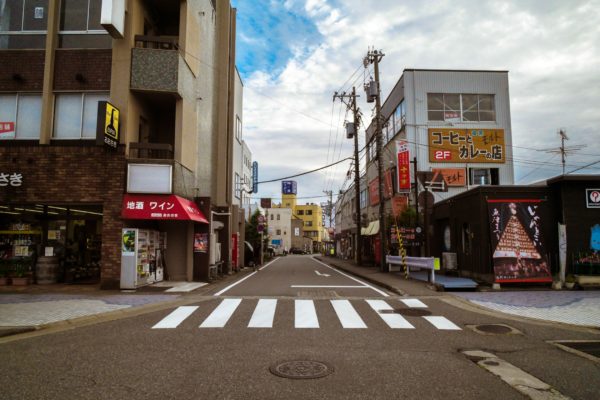
I thought this was strange at first and a big hassle. However, after a year living here now I’ve gotten used to it. It’s actually not time consuming at all.
It’s also increased my awareness of how much trash I consume on a daily basis. It also makes you think twice about buying a plastic bottle or to-go container – knowing you’ll have to carry it around with you for the rest of the day.
4. Eating is an Art Form
One of the best things about life in Japan is the delicious food. There are so many cafes and restaurants with affordable (compared to Hawaii at least), mouth watering meals nearly everywhere you go!
If you’re not a fan of Japanese cuisine, don’t worry – there’s also lots of pasta, pizza, Indian, Thai and other western foods available.
Single Eaters Welcome
Restaurants are set up for customers to eat and leave as quickly as possible, since most Japanese work long hours. At many restaurants you don’t need to have any human contact at all. You pay using a machine and get your meal quickly after. You’ll notice locals gulping down their food in mere minutes and then heading out.

You don’t need to feel awkward when eating by yourself either, since most restaurants cater to single eaters. This is a stark contrast from the slow-paced lifestyle I experienced in Hawaii – where most people take their time enjoying good food with close friends and family.
Read Related: 3 Positive Benefits of Spending Time Alone
The Customer is Not Always Right
The Japanese restaurant culture is much different than the U.S’s service moto of ‘the customer’s always right’ or ‘have it your way.’
If you ask for a special request for your meal, such as adding a different sauce that’s not meant for it – the chef might straight up tell you it’s not recommended for their dish. Japanese chefs and restaurateurs take great pride in their creations and if you alter it – it might offend them.

However, most service workers are extremely polite and welcoming to foreigners. But it’s not like the tip-based industry in America, where your server is constantly checking up on you. Instead, workers will generally only tend to you when called upon. Many restaurants offer a service bell at the table for this reason.
5. Nature is Everywhere
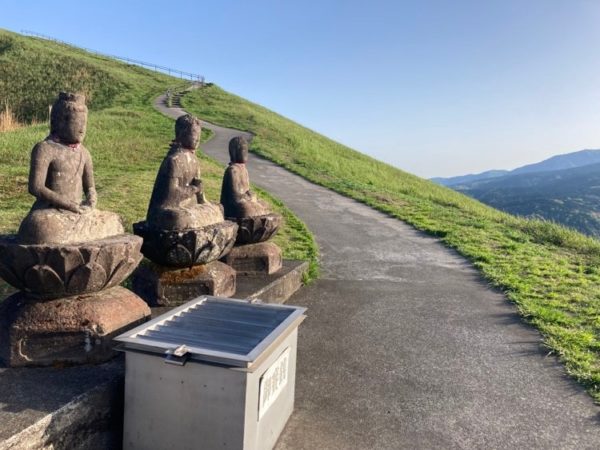
For a country with many massive, metropolitan cities, about 67% of all Japan’s land area is uninhabited forest. This gives life in Japan a unique balance between serene nature and modern development.
There are numerous ways to enjoy nature here including: camping, surfing, cycling, kayaking, hiking, snowboarding/skiing, rafting, and more.
You’re probably familiar with Japan’s Sakura (cherry blossom) season in the spring, where blooming trees align all across Japan’s streets and parks. However, plenty of other types of gorgeous flowers bloom throughout Japan, as well.

I enjoy strolling through the country’s countless botanical gardens, flower parks, and displays throughout the cities. There’s even a special word for flower viewing in Japanese: hanami.
Gorgeous flowers bloom across Japan in different seasons. In March-May Tulips and Wisteria are in bloom, from May-July is the Hydrangea, Sunflower season is July-August, and Chrysanthemums can be seen from September-November. There are even many more types of flowers to be seen and no shortage in easily accessible public parks and gardens.

6. Kawaii Cartoon Mascots
Japan is known for its anime (animation) and distinctive kawaii culture. Kawaii means cute in Japanese. Kawaii culture refers to the country’s fondness for cutesy, colorful and cartoon-y things.
What may be considered youthful or childlike in the states, is usually considered as just normal scenery for life in Japan.

But apart from the myriad of character cafes, themed restaurants, adorable collectables and stationary items, cuteness also comes in the form of cartoon mascots.
In Japan, you’ll see lots of cute cartoon mascots – and not just to promote companies, but also tourism, and good behavioral practices.
All types of companies from construction, to transportation, aquariums, ski resorts and restaurants often have their own cartoon mascot. It’s usually an adorable animal, but sometimes it’s an animated woman or cute child.

There’s an adorable bear mascot for a construction company. One of my favorites is a lovable train mascot for a popular transportation company.
But not just companies, some towns in Japan also have their own mascot. And then there’s Quaran, a cute fairy mascot wearing PPE promoting the importance of quarantine during the COVID-19 pandemic.
It’s always a pleasant surprise to discover these adorable mascots nearly every where I explore around Japan. These mascots showcase the Japanese’s fun-loving and spirited nature. I appreciate how it’s culturally acceptable to show your child-like and playful side, which we all have. I mean, the world is tough enough, why not brighten your day with some adorableness?
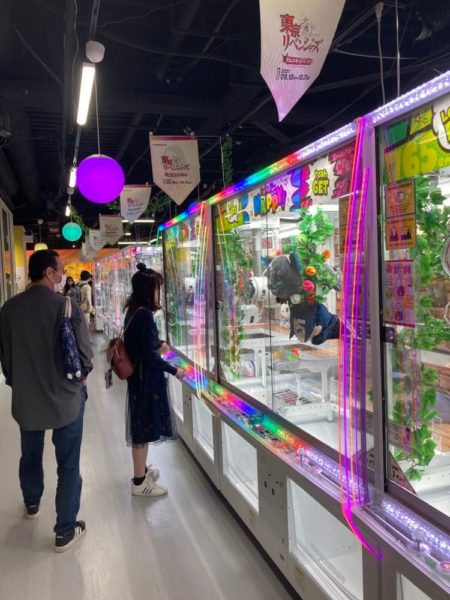
7. Seniors are Highly Active
In comparison to other countries, Japan has a high number of seniors in its population. According to the Japan Times, 29.1% of its total population is aged 65 or older (2021) – which is higher than 201 other countries and regions.
Most seniors live a healthy and active lifestyle and are an integral part of their community. It’s common to see the elderly living their lives to the fullest while out exercising, gardening, holding a part-time job, volunteering for a good cause, or socializing with friends.
The country’s view on aging is much different than the U.S. Respect for elders is a cultural value ingrained in Japan from a young age. There’s less stigma around aging. Since Japan has one of the highest life expectancy in the world, it’s easy to see why living an active lifestyle even in senior years is not uncommon.
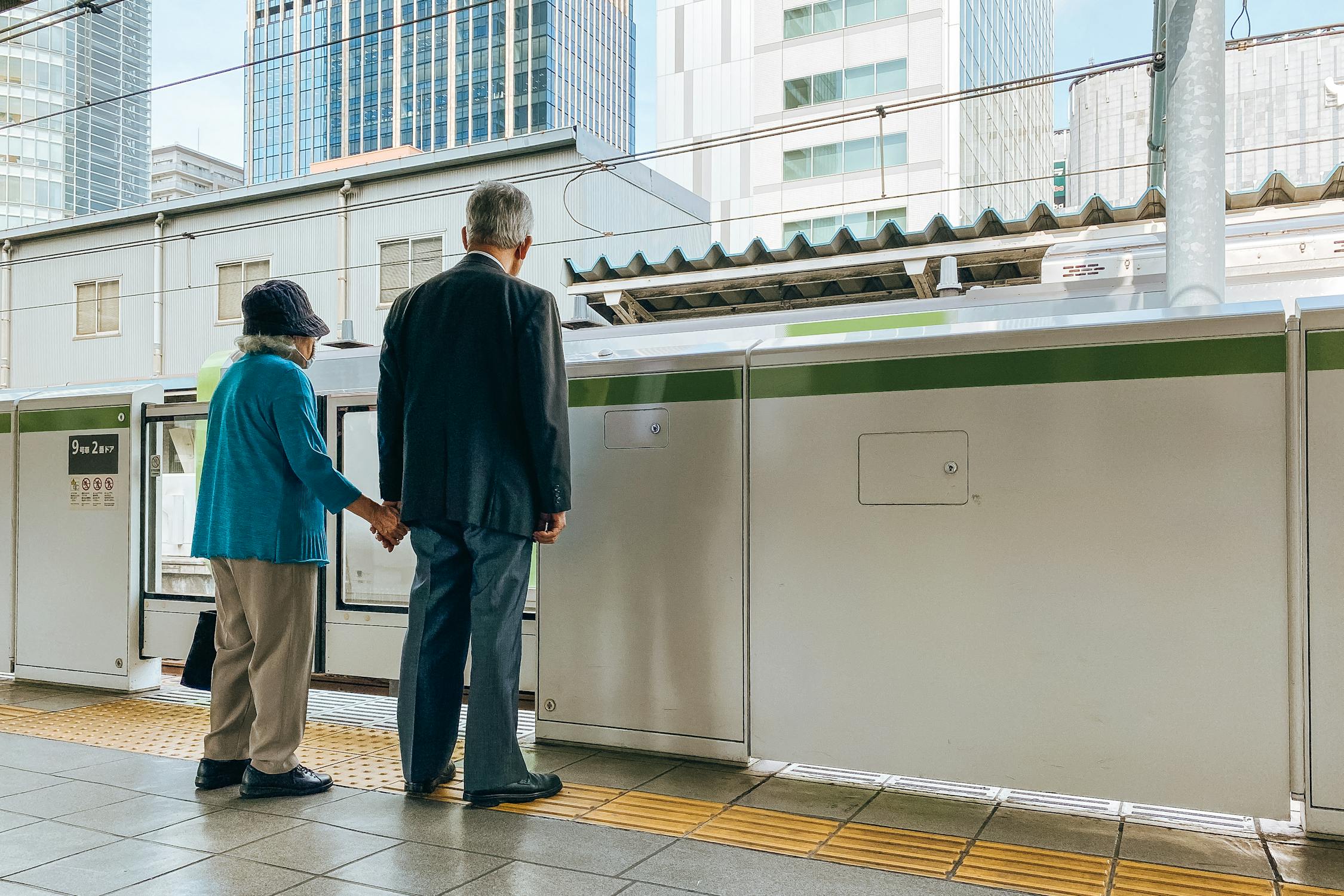
This is another reason why I love life in Japan. It’s so inspiring to see senior citizens living active and happy lives. I was surprised at first to see seniors getting out on the ski slopes, or gaming at the local arcades.
Recently, at a nonprofit that helps foreigners improve their Japanese, I met an 84-year-old woman who lives alone and volunteers there once a week. Luckily for me, there are many English-speaking seniors who are happy to donate their time giving Japanese lessons to foreigners.

Closing Thoughts
So many things make life in Japan a fun, wondrous experience. This list is just a small fraction of all the charming, unique bits that make up Japanese culture and lifestyle.
This is the first time I’ve lived abroad. I’ll admit so far ‘s been amazing – but also difficult, confusing, and lonely at times.
Living in a foreign country is a much more eye-opening experience than merely visiting it. You get to experience the country’s culture and lifestyle on a deeper level. You also gain a larger perspective on the differences in cultural values and practices that makes each country unique.
I hope this is inspiration to take your own trip to Japan. Unfortunately, due to the pandemic, the country is not completely open to foreign travelers yet. However, this is starting to change as more restrictions are gradually being lifted.
Read Next: 10 Powerful Ways Mindfulness Changed My Life

